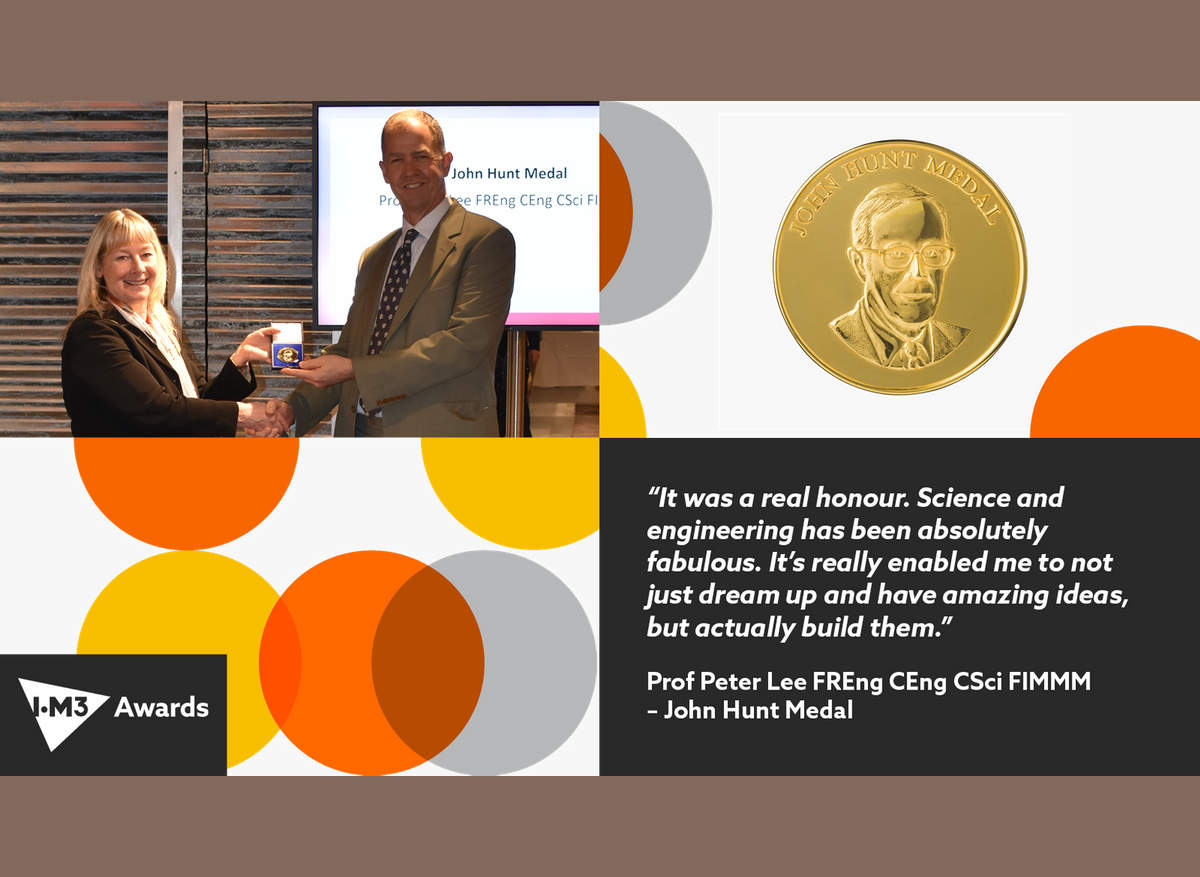John Hunt Medal (not available in 2025)
The John Hunt Medal is presented for outstanding contribution to the science and/or technology of casting and solidification of metals.
The winner will receive a medal.
About the John Hunt Medal
The award recognises the lifetime contribution of Professor John Hunt FRS and is supported through the General Research Institute of Non-ferrous Metals (GRINM) in Beijing.
Award judging
Past winners
2022 Prof Lorenz Ratke, 2021 Prof Peter Lee FREng CEng CSci FIMMM, 2018 Prof Lindsay Greer, 2016 Prof Alain Karma, 2015 Prof Wilfried Kurz, 2014 Prof Rohit Trivedi
About John David Hunt FRS (1936 - 2012)
John Hunt was an eminent metallurgist who will be remembered as a pioneer in the field of solidification research. He earned his BA in metallurgy in 1960 and Phd, titled Modification of Eutectics, in 1963, both from the University of Cambridge. He then joined the Bell Telephone Laboratory at Murray Hill, New Jersey as a research fellow and then the UK Atomic Energy Authority at Harwell for a year. He was appointed as a lecturer at the University of Oxford in the Department of Materials Science in 1966 and a Fellow and Tutor in Metallurgy at St Edmund Hall in 1968. John was made an Ad Hominem Reader in 1990, a University Professor in 1996, an Honorary Professor of North Western Polytechnic University in China in 1006. He retired, aged 67, in 2004. In 2006, john became a Professor Associate in BCAST at Brunel University, where he continued his solidification research with great passion.
John was an inspiring and deeply insightful teacher, and his lectures on solidification and chemical metallurgy were well remembered by his students thanks to his unique approach to their delivery. He often started his lectures with a precise definition of a problem, followed by the introduction of the existing theories as potential solutions, but always ended by explaining why the existing theories were wrong. This left his students with a huge urge to solve problems and inspired them to become key players in solidification research. John had an unusual ability to see through complex natural phenomena and develop simple physical and mathematical solutions. Through his natural instinct and deep insight, every challenge became easy and simple to him. It was repeatedly demonstrated that his assumptions or simple models could not be improved or bettered. He could often surprise colleagues with an immediate answer within the right order of magnitude and was well known for his no-nonsense comment at conferences of 'I don't believe it!', which inspired colleagues to go the extra mile for better answers and solutions. This made John the major contemporary personality of solidification research and won him great respect from his peers.
John's scientific achievements in the field of solidification are extensive, deep and pioneering. With Ken Jackson he discovered transparent low melting point materials as analogues for metallic materials solidification and the widely used eutectic growth model. With his research group at Oxford, he developed the first self-consistent model of cellular and dendritic growth, the first realistic model of columnar equiaxed growth and the theoretical models for selection of the eutectic range. John's experimental researches also very fruitful. He developed the only method for direct measurement of solid/liquid interfacial energy, in situ observation and modelling of porosity formation in aluminium, a new mechanism for particle pushing during solidification, development and modelling of the twin roll casting process and a new single pan high resolution calorimeter. As mentor to the BCAST group at Brunel University, John actively participated in its research activities related to liquid metal engineering and the development of the epitaxial nucleation model and the fully equiaxed solidification model.
John met Ann during their first year as undergraduates in natural sciences at Cambridge. They married in 1961 and celebrated their Golden Wedding Anniversary on the River Thams in September 2011. John and Ann moved to the Church Farm House in North Leigh in 1968 and lived there for the next 44 years.
John published more than 200 research papers and received recognition and honours from many quarters, He was elected Fellow of the Royal Society in 2001. He received the Champion Herbert Mathewson Gold Medal from the American Institute of Metallurgical Engineers (AIME) in 1967, the Rosenhain Medal and Prize from the Institute of Metals in 1981, the Bruce Chalmers Award from TMS and AIME in 1996, and the Royal Society and Armourers and Brasier's Company Medal and Prize in 2001. John's outstanding contribution to solidification research was honoured by a symposium and dinner as part of the TMS Spring Meeting in San Antonio in March 2006, and the John Hunt International Symposium was held at Brunel University in 2011 on John's 75th birthday to celebrate 50 years of solidification research.
John died peacefully on 8 December 2012 and is survived by Ann, their two children, David and Helena, and their five grandchildren. He will be fondly remembered as a loving family man, a remarkable person and an outstanding scientist.
Zhongyun Fan, BCAST, Brunel University
Materials World January 2013, p.57


